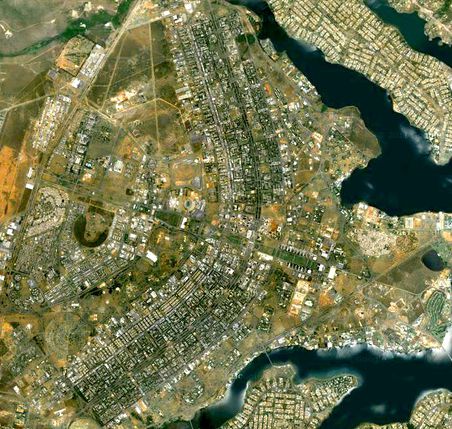Brasília
On Monday the 29th we arrived in Brasília, the capital of Brazil. Beth and I arrived in the morning after more than twenty four hours on the bus. We arrived later than expected too because our bus arrived in Curitiba nearly two hours late due to being held up by a protest. The protest was in São José, a small city just south-east of Curitiba, which has a very dangerous stretch of motorway that a girl had gotten run over on a few days prior. Then during the protest which was occurring just as our bus was on its way through one of the protesters was run over and killed too!! well at least the protest should have made a very clear statement about how dangerous that section of the road is! Here's a picture of the route for our last leg of the journey, and a hazy photo of the sunrise taken through the bus window which matches our mood at the time!
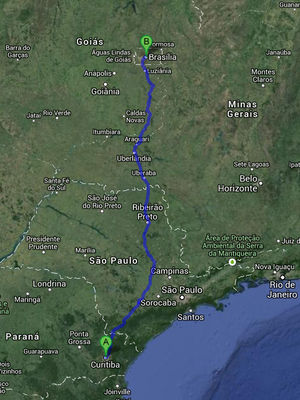 |
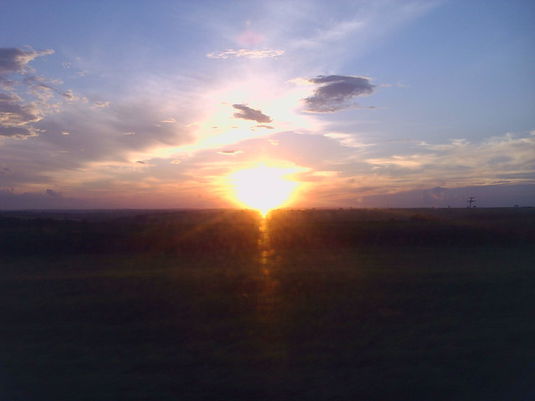 |
Brasília and its District are located in the Central-West region of the country, along a plateau known as Planalto Central. It has a population of about 3.6 million, making it the fourth largest city in Brazil.
As the national capital, Brasília is the seat of all three branches of the Brazilian government, legislative, judicial and executive. The city also hosts the headquarters of many Brazilian companies. Planning policies such as the location of residential buildings around expansive urban areas, as well as building the city around large avenues and dividing it into sectors, have sparked a debate and reflection on life in big cities in the 20th century. The city's design divides it into numbered blocks as well as sectors for specified activities, such as the Hotel Sector, the Banking Sector or the Embassy Sector.
The city was planned and developed in 1956 with Lúcio Costa as the principal urban planner and Oscar Niemeyer as the principal architect (see also the Oscar Niemeyer Museum in Curitiba). On April 22 of 1960, it formally became Brazil's national capital. Viewed from above, the main portion of the city resembles an airplane or a butterfly as can be seen in the following image (click on the image too see more detail). For more information about the city and it's interesting structure, see our Brasília category.
Mum and Dad arrived later in the evening and we stayed for our first night all together at Beth's parents house. The house is about an hour out of the main city in Brasília on about ten hectares of land. It's a very hot climate there so they're growing lots of tropical fruit. They also have chickens for eggs and cows for milk and grow sugar cane and corn.
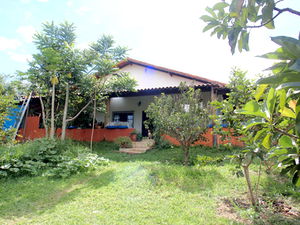 |
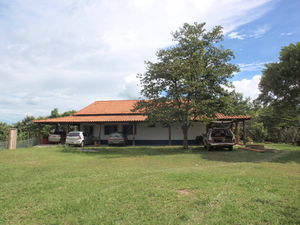 |
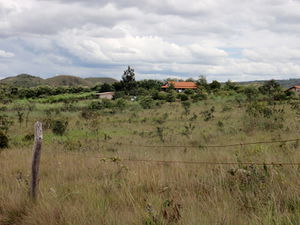 |
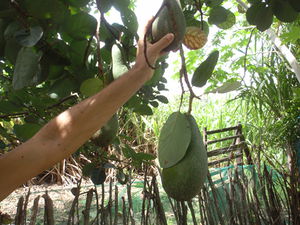 |
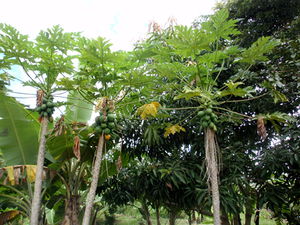 |
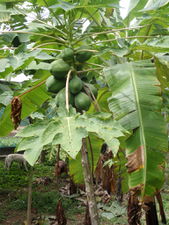 |
We spent the first few days there just relaxing and recovering from our travels. We had a quick look at the city when Beths Dad needed to buy some construction materials and we went to a nearby market to buy some fruit. The market wasn't as well priced as what we're used to in Curitiba or down south, but was still quite interesting because it had a huge range and quantity of tropical fruit and also had an area where they grind herbs and spices such as cumin, paprika and various teas right there on the spot.
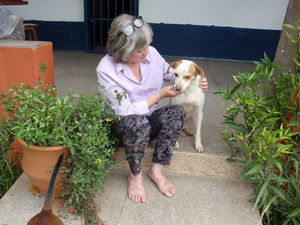 |
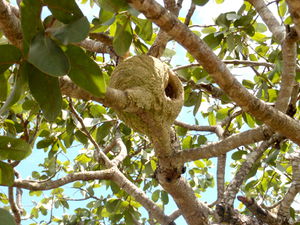 |
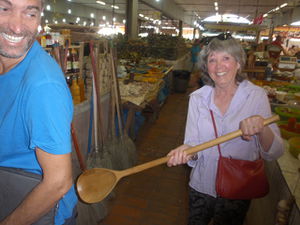 |
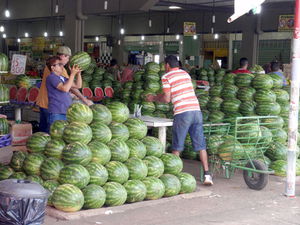 |
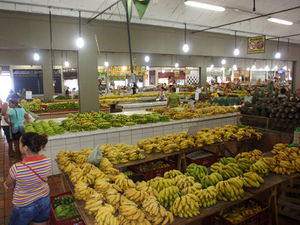 |
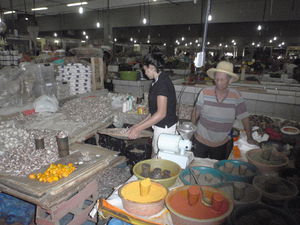 |
